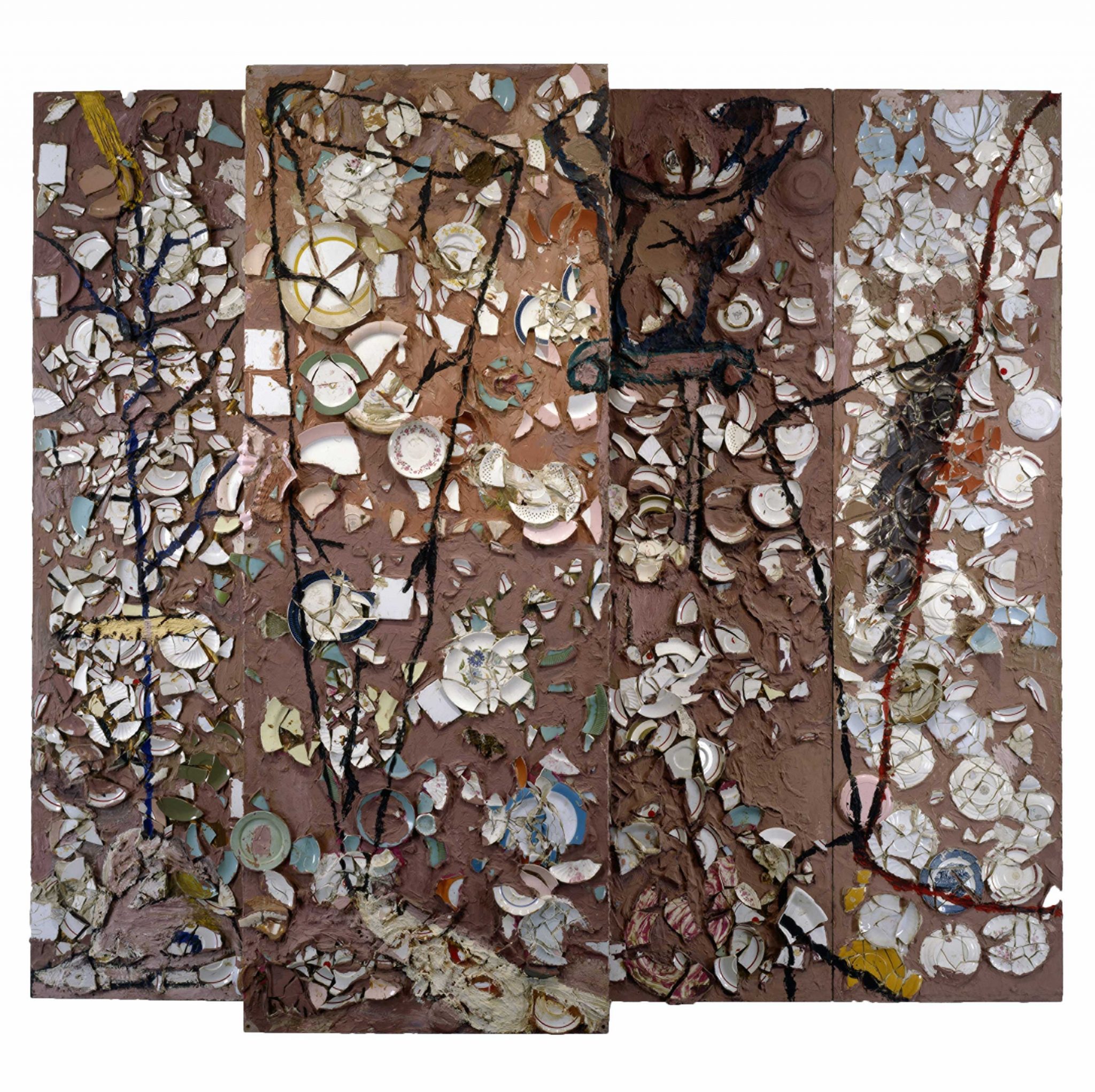It’s hard to divorce Julian Schnabel from context. Indeed context is both the curse and blessing that has come to define the artist’s work and career over the last 35 years. That barrel chest! That hair! Those pyjamas! Celeb friends! Montauk! West Village palazzo! Great films! Mary Boone! That hair! Those paintings… Here the exclamation tends to either the terrible or the wonderful, but rarely anything in between.
What was it about those paintings that made them so infamous at that moment in New York during the late 1970s and early 1980s when, as so many artists and their critics have noted, the tectonic plates of culture (pun intended) felt like they were cracking up to swallow whole the gains (or losses) of the prior 20 years, not to mention the historical memory of the pre-Second World War avant-gardes? Wasn’t painting dead? Hadn’t its inherent humanism and its private language of subjective investment been shown to be obsolete if not morally bankrupt? And who is this asshole with the hair that isn’t reading Craig Owens and getting in line like everyone else?
A few decades on and this language of critique does feel, for better or worse, like it has run out of steam. What better time then to put up some of those notorious early paintings, direct from the painter’s private collection. And who better to organise the affair than Alison Gingeras, house curator to Amalia Dayan and Daniella Luxembourg’s uptown shop, which has underwritten the East Village storefront, Oko, where one work from each of Schnabel’s early series – St Sebastian – Born in 1951 (1975–9), The Patients and the Doctors (1978), Mutant King (1981), Abstract Painting on Blue Velvet (1980) – is on view in two-week stints. Context strikes again.
But oh, that painting! Dumb luck – or because the rhetoric matters in such cases, ‘divine providence’ – gave to us to see The Patients and the Doctors, one of the notorious plate paintings that Schnabel exhibited in his first solo show at Mary Boone’s Soho space in 1979. It’s big. So big in Oko’s little space that, like some aesthetic bear hug, you can’t break away from it. Surprisingly, though, it’s less gestural, less expressionist and muscular than all of the history book deflations would have one believe. Breaking the plates and placing all of those ceramic shards must have been a chore. The archaeological implications are not unwarranted, but this is backyard archaeology, the way a twelve-year-old might do it (didn’t you want to play with something called Bondo when you were a kid?). The figures are more drawn than painted, clumsily sketched in over the work’s jagged three-dimensional surface, as if St Sebastian’s body from the prior painting had been jettisoned but the scars retained. And finally, that play between two-dimensions and three, specifically where one of those figures overlaps the work’s two major levels, is facile.
And yet, there’s all that context, equally embedded in this painting’s surface, equally part of its work, be it blessing or curse.
This article was first published in the April 2013 issue.
